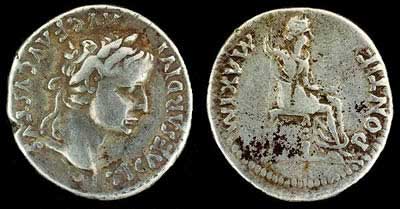This site provides something different: many sites and books provide a brief summary of the reading – so that people read out or have in their pew sheet an outline of what they are about to hear. They are told beforehand what to expect. Does this not limit what they hear the Spirit address them? This site provides something different – often one cannot appreciate what is being read because there is no context provided. This site provides the context, the frame of the reading about to be heard. It could be used as an introduction, printed on a pew sheet (acknowledged, of course), or adapted in other ways.
Exodus 33:12-23
A context is the biblical thread of not being able to see the face of God and live. Hence those stories where people encounter God’s presence (Exodus 33:14 Hebrew literally “face”) and live are stories pointing to death and resurrection and new life.
Isaiah 45:1-7
This text is part of Deutero-Isaiah (Chapters 40-55) addressed not to those in Jerusalem but to the exiles in Babylon, probably around 537 BCE. God addresses Cyrus, the Persian emperor, as God’s anointed – messiah. This title was used for kings (1 Samuel 16:6), prophets (Psalm 105:15), and priests (Leviticus 4:3). Not for the hoped-for Promised one. God works through surprising means – including those who are not aware of God’s action (Isaiah 45:4).
1 Thessalonians 1:1-10
This is most likely the earliest document in the New Testament. Thessalonica was a port on the northern shore of the Aegean Sea and the capital of the Rmoan province of Macedonia. Paul, Silvanus, and Timothy had a negative experience in Philippi (Acts 16:11-40, 1 Thessalonians 2:2) and moved on to Thessalonica. They were forced to move on (Acts 17:1-10) by Jewish opposition. When Timothy rejoined Paul in Athens, Paul sent him to Thessalonica (1 Thessalonians 3:1-2). Paul then travelled to Corinth. Timothy and Silvanus (“Silas”) met Paul in Corinth (Acsts 18:1-5). Timothy told Paul about positive aspects of the Thessalonian community (1 Thessalonians 3:6-7) and some of their issues (2:17-18). So in 50 or 51 CE Paul wrote this letter from Corinth. Some scholars think this is a conflation of two or three letters.
Matthew 22:15-22

A denarius from the time of Tiberius who reigned from 14CE to 37CE image source (link off this site)
The context of this story needs an understanding of the Pharisees (link off this site) as contrasted with Saducees – they were strict in their interpretation of the totality of the written and oral form of the law. By expanding beyond the written law, they held to newer beliefs such as resurrection and angels. It is clear that Jesus’ beliefs were more closely aligned with the Pharisees than with the Saducees. Herodians (link off this site) were supporters of Herod the Great’s dynasty.
The insincere flattery of the questioners does not take Jesus in as he once again shows his mastery of challenge and riposte in this culture of honour. The coin (above) has the image of the emperor Tiberius with the Inscription: TI CAESAR DIVI AVG F AVGVSTVS (“Tiberius Caesar son of divine Augustus son of Augustus”) and on the other side the image of Livia, the mother of Tiberius and wife of Augustus, as Pax seated, with the inscription PONTIF MAXIM (“Pontifex Maximus”) – high priest and now one of the titles of the Pope. Pharisees, as other pious Jews would have been offended by the declaration of Tiberius’ divinity and this graven image. That someone from the Pharisee/Herodian group produces this coin shames the questioners.
